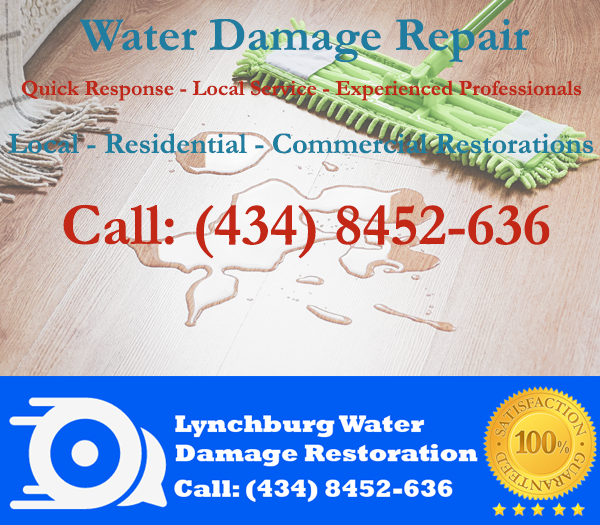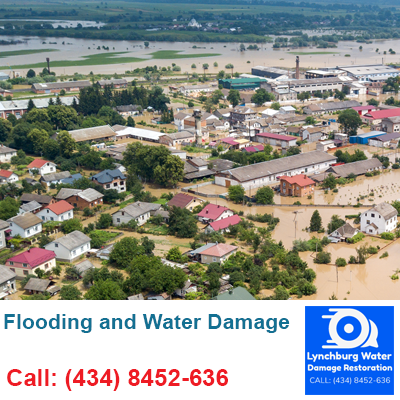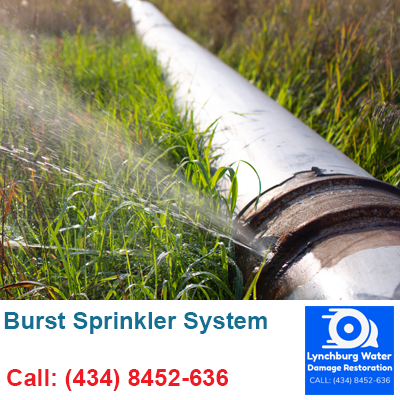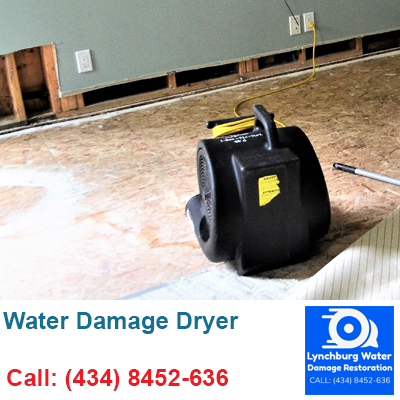Lynchburg Water Damage Restoration - Residential and Commercial Cleanup Services in Virginia

Why Call Us First?

Contact Lynchburg Water Damage Restoration if you need high-quality services for recovery, restoration, and reconstruction. Because of the frequency with which water damage occurs in the area, it is one of the most requested services we offer.
Our skilled staff will expertly help you get your house or place of business back up and running as soon as possible. Our team is very knowledgeable about water damage restoration in Miami. We also provide a wide range of other services, such as biohazard cleanup, business cleaning, demolition, fire damage restoration, cleaning, mold inspections, mold remediations and sanitization.
When you contact us, we comprehend that you can feel stressed out and burdened. At Lynchburg Water Damage Restoration, we want to reassure you that we will work hard to soothe your concerns, lessen your stress, and restore order to your life.
We Provide Local, Residential and Commercial Restoration Services.
Flooding and Recovery
Lynchburg and the surrounding area are no strangers to flooding and water damage. The harm that can be done by water, especially if it is not contained, is enormous. Under the right circumstances, that slow trickle from the kitchen or bathroom sink that's never filled the sink's basin may fill an entire room, if not the entire home.
Historically, there have been two classifications for flood water: "black water" and "gray water." The term "black water" refers to water that has come from an untreated source. The toilet, the sinks, and the dishwasher all fall under gray water.
Dealing With Clean Water Damage - Burst Pipes

Clean water damage is the most manageable type. If the water damage is from a broken pipe (the least severe), it is considered "clean" because it is from a somewhat sanitary or natural source and contains few hazardous bacteria. Clean water damage is typically caused by a failing appliance, a water tank, a busted pipe, melting snow, or rainfall.
Water lines can freeze and become blocked during cold snaps in the winter. If the problem isn't fixed, the pressure inside the pipe will rise, and eventually, it will burst. The damage from a single burst water pipe in your home could easily exceed $5,000 if you don't take immediate action.
Even though it's safer, improperly removing clean water can lead to mold and mildew growth. We recommend calling us immediately, your local water cleanup service, if the water has been sitting for more than 24 hours.
Limiting Water Leaks and Damage
Moisture can be one of the most harmful factors impacting construction, as we have learned from our extensive experience in the field.
Unwanted and unintended water can enter your building because of a busted pipe, a storm, or an overflowing drain. Emergency water leaks of this nature might happen at any time. Your ability to react effectively to such crises can greatly cut down on the expenses and losses you suffer.
What Can Cause Emergency Water Damage?
Any unexpected water entry into a facility is referred to as "water damage". Water can enter your facilities through a variety of channels, from natural calamities to sloppy maintenance. These include, but are not limited to:
- Faulty Sprinkler Heads
- Storms
- Burst Pipes
- Backup Of Sewage
- Damaged Roof
- Defective HVAC Equipment
- Appliance Breakdown
- Clogged Drains
- Blocked Guttering
These are just the most obvious things. There are numerous more potential sources of damage. The consequences, especially in the case of medical facilities, can often be severe. When a room is covered in water or when building materials are soaked with water, operations stop.
Patients may not receive care, senior living community members may be separated from their houses, hotel guests may be turned away, customers may go unattended, or your property may become uninhabitable as a result of this disruption in the infrastructure.
Water damage is one of the most destructive and costly disasters homeowners can experience. A flooded basement, a broken pipe, or a leaking roof can cause extensive damage to your home and belongings.
Fortunately, restoration is possible. With the right tools and techniques, you can repair the damage and restore your home.
In this article, we’ll discuss the basics of water damage restoration and how to get started. We’ll cover the different types of water damage, the tools you’ll need, and the steps you should take to restore your home or business.
What Is Water Damage Restoration?
Water damage restoration is the process of repairing and restoring a property that has been damaged by water. It includes the assessment of the damage, the removal of excess water, the removal of damaged materials, and the cleaning, drying, and dehumidifying of the affected area.

Depending on the severity of the damage, water damage restoration can involve structural repairs, such as replacing drywall, carpets, flooring, and furniture, as well as mold remediation. Ultimately, the goal is to restore the property to its pre-damage condition.
Water damage restoration can be a long and complex process, and it is important to seek professional help if you have experienced water damage in your home or business. A professional water damage restoration company can assess the damage, determine the scope of the work required, and provide the necessary services to restore your property.
Causes Of Water Damage
Water damage can have many causes, both natural and man-made. Below are some of the most common sources of water damage that require restoration:
- Flooding: Flooding is one of the most common causes of water damage. Floods can be caused by heavy rains, overflowing rivers, storm surges, and more.
- Sewage Backup: Sewage backups can occur when the sewer lines become clogged or backed up. This can cause contaminated water to enter your home, resulting in water damage.
- Burst pipes: Leaking pipes are a major cause of water damage in homes. Pipes that are not properly maintained can leak, allowing water to seep into your walls and floors.
- Appliance Malfunction: Appliances that malfunction can cause water damage. This includes washing machines, dishwashers, and refrigerators.
- Weather-Related Damage: Weather-related water damage can be caused by high winds, hail, snow, and ice. These conditions can cause roofs and walls to leak, resulting in water damage in your home.
Water damage restoration is an important process for ensuring that your property is safe and dry. Understanding the potential causes of water damage can help you to take the necessary steps to prevent it from happening in the first place.
Types Of Water Damage
Water damage can come in many forms and can have varying degrees of severity. Here are some of the most common types of water damage:
- Floods: This happens when water from a source, like a river or ocean, enters a building. Flooding can cause serious damage to a property and is often accompanied by mud and debris.
- Leaky Pipes: Pipes can become damaged over time due to corrosion or wear and tear. Leaks can cause water to enter a building, leading to mold growth and structural damage.
- Storm Damage: Storms can cause a variety of water damage, from flooding to roof damage. The severity of the damage will depend on the intensity of the storm.
- Mold Damage: Mold is a serious issue and can cause health problems. It is often caused by water leaking into a building and can be difficult to remove.
- Sewage Backup: Sewage backup can happen when sewage pipes become blocked or clogged. This can cause contamination in a building and is a serious health hazard.
Water damage can be devastating, but there are steps that can be taken to minimize the damage and help restore a property. It is important to act quickly when dealing with water damage, as the longer it is left untreated the worse the damage can become.
Water Damage Prevention
Preventing water damage is essential in protecting your home from costly repairs. Taking proactive steps now can save you time and money in the long run. Here are some tips to help prevent water damage in your home:
- Inspect your home's plumbing regularly. Check for leaks, exposed pipes, and any other signs of damage.
- Make sure your gutters and downspouts are clean and free of debris. Clogged gutters can cause water to back up and cause damage to your home's foundation.
- Make sure your sump pump is in good working order. A sump pump can help to keep your basement dry and free of water damage.
- Inspect the weather stripping around windows and doors to make sure it is not cracked or broken.
- Check for any drips or leaks around faucets, toilets, and sinks.
Taking the time to inspect your home regularly and make necessary repairs can help prevent water damage and costly repairs down the road.
Inspection And Assessment Of Water Damage
The next step in water damage restoration is to inspect and assess the damage. Professional water damage restoration experts will be able to quickly identify the source of the water and assess the extent of the damage. This is a crucial step in the restoration process, as it helps to determine what steps need to be taken to repair the damage.
A thorough inspection will include looking for visible signs of water damage, such as staining, peeling paint, or warped walls. Then, the experts will use specialized equipment to measure the moisture levels in the affected area. This helps to identify which materials are salvageable and which need to be replaced.
The assessment will also include determining whether there is any mold growth. Mold spores can spread quickly, so it's important to identify and eliminate any mold growth as soon as possible.
Once the inspection and assessment are complete, the experts will be able to provide an estimate of the cost of the restoration. This will help you make an informed decision about how to proceed with the restoration process.
Water Extraction And Removal
Once the inspection and assessment are complete, the next step is water extraction and removal. This is the process of removing water and moisture from the affected area. It's important to do this quickly and thoroughly, as any remaining moisture can lead to further damage or mold growth.
The first step is to use a wet/dry vacuum to suck up any standing water. This is best done with a powerful commercial-grade machine, as they are the most effective at quickly removing large amounts of water.
For areas with a lot of moisture or saturation, a submersible pump may be needed. They are designed to draw out large amounts of liquid from carpets, hardwood floors, and other surfaces. The area may also require air movers to help dry out the space. They help to speed up the drying process by circulating warm, dry air around the area.In some cases, dehumidifiers may be necessary to help reduce the amount of moisture in the air. This is especially important if there is a risk of mold growth.
Water extraction and removal is a critical step in the water damage restoration process. It's important to make sure it's done quickly, thoroughly, and properly to help prevent further damage and mold growth.
Structural Drying And Dehumidification
Structural drying and dehumidification are essential steps in the water damage restoration process. Once the water has been extracted, the next step is to ensure that the structure is completely dry. This is done using specialized equipment, such as air movers, dehumidifiers, and thermal imaging cameras.
Air movers are powerful fans that are used to circulate and evaporate moisture from the air. This helps to speed up the drying process and minimize the chance of mold and mildew growth.
Dehumidifiers are also used to reduce humidity levels and help to keep the air dry. They help to draw out moisture from the air and surfaces, preventing the growth of mold.
Finally, thermal imaging cameras are used to detect moisture and identify problem areas. They help to pinpoint where water is hiding, allowing restoration professionals to target their efforts and complete the job efficiently.
Structural drying and dehumidification are important steps in the water damage restoration process. By using the right tools and techniques, water damage can be quickly and effectively remediated.
Sanitization And Odor Removal
Once the structural drying and dehumidification process is complete, it's time to begin the sanitization and odor removal process. This is a crucial step in restoring your property to its pre-damaged state.
Sanitization is important to remove any bacteria, mold, or other contaminants that may have been left behind from the water damage. This can be done with a fogging machine which helps to evenly distribute a sanitizing agent throughout the affected area.
Odor removal is also important, as water damage can often leave behind a musty smell. This can be done with a deodorizing spray, which will help to neutralize any odors and leave your home smelling fresh and clean.
These steps will help to ensure that your property is thoroughly cleaned and restored to its pre-damaged state. In addition, they will help to prevent any future health risks due to mold or bacteria growth. Taking the time to properly sanitize and deodorize your home after water damage is essential for ensuring your family's health and safety.
Rebuild And Renovation
Once all of the water has been extracted and the affected areas have been sanitized and deodorized, it’s time to start rebuilding and renovating. Depending on the extent of the damage, this could mean anything from minor repairs to a full-scale renovation.
If only a small area has been affected, the job may be as simple as replacing warped wood or redoing some drywall. But if larger areas of the home have been damaged, the job could involve replacing flooring, walls, insulation, and other structural components.
No matter the scale of the project, it’s important to use quality materials and construction techniques to ensure your home is restored to its original condition. A professional restoration team can help you make sure that your home is rebuilt with the best materials and that it meets all necessary safety and health codes.
Rebuilding and renovating an area of your home that has been affected by water damage can be a time-consuming and expensive process. But with the right team, you can be sure that the job will be done right and that your home will be safe and comfortable once again.
Insurance Considerations
When it comes to water damage restoration, insurance considerations are an important part of the process. Homeowners should contact their insurance provider to determine what type of coverage they have and what is covered. In some cases, the insurance company may cover the entire cost of the restoration, while in other cases, the homeowner may be required to pay a percentage of the total cost.
It's also important to note that certain types of water damage may not be covered under traditional homeowners insurance. For example, damage caused by flooding, mold, or sewage backups may not be covered. If the damage is caused by these types of events, the homeowner should contact a specialist to discuss additional insurance coverage options.
Homeowners should also be aware that their insurance policy may have deductibles or exclusions. It's important to read through the policy in detail and to contact the provider with any questions or concerns. This can help to ensure that the homeowner understands their coverage and is aware of any potential limitations or restrictions.
Water damage restoration can be a costly and time-consuming process, but it's an important step in protecting the home and restoring it back to its original condition. Taking the time to familiarize yourself with your insurance policy and to understand the coverage you have can help to ensure that you are adequately protected and that the restoration process will go as smoothly as possible.
Frequently Asked Questions
How Much Does Water Damage Restoration Cost?
Water damage restoration can be a costly endeavor, depending on the amount of damage, accessibility, and the extent of the repairs needed. The cost of restoration services varies greatly, ranging from a few hundred dollars to tens of thousands of dollars. It’s important to understand the factors that affect the cost of a restoration project in order to make an informed decision.
The cost of water damage restoration is largely determined by the extent of the damage and the materials needed to repair it. For example, minor water damage can often be addressed with relatively inexpensive materials, while more extensive damage may require specialized equipment and materials. The location of the damage is also a factor; inaccessible locations may require additional labor and materials to reach.
The cost of restoration services can also vary depending on the company you choose. Professional restoration companies typically charge an hourly rate for their services, in addition to the cost of materials. Some companies may offer discounts or special packages to help reduce the overall cost of the project.
It’s important to remember that water damage restoration is a process that requires specialized skills. The cost of restoration services should not be seen as a sign that the service is any less valuable. Taking the time to find a reputable restoration company with experience in dealing with water damage can ensure that the job is done properly and that the costs are kept to a minimum.
What Is The Best Way To Prevent Water Damage?
The best way to prevent water damage is to take proactive steps to limit the risk. There are many simple and cost-effective steps you can take to help reduce the risk of water damage in your home.
First, check your home’s plumbing system to make sure everything is in good working order. This includes checking for any visible signs of damage, such as cracked pipes, leaking fixtures, and clogged drains. Additionally, consider replacing your pipes if they are more than 10-15 years old.
Second, inspect your roof for any missing or damaged shingles or tiles. If you notice any issues, be sure to repair them quickly to prevent water from entering your home.
Third, have your home inspected for any potential sources of water leakage, such as around windows and doors. This will help you identify any issues before they become major problems.
Finally, consider investing in a sump pump. This device will help to divert water away from your home and prevent flooding in case of heavy rain
.By taking proactive steps to prevent water damage, you can save yourself a lot of time, effort, and money in the long run. Taking the time to inspect and maintain your home can help to protect your home and keep your family safe in the event of a water leak.
Is Water Damage Restoration Covered By Insurance?
When it comes to water damage restoration, one of the most important questions is whether or not it is covered by insurance. The answer to this question depends on the type of damage and the cause of the damage. Generally speaking, most policies will cover water damage restoration caused by sudden and accidental events, such as a burst pipe or a natural disaster.
However, if the damage was caused by something that was not sudden and accidental, such as poor maintenance or neglect, then it may not be covered by your insurance policy. In addition, some policies may not cover the full cost of the restoration. It is important to read your policy carefully and to understand what is and isn't covered.
In some cases, you may be able to purchase additional coverage to ensure that you are covered for water damage restoration, regardless of the cause. Be sure to contact your insurance provider to find out what options are available.
Water damage restoration can be an expensive undertaking, so it is important to know if it is covered by your insurance policy. Make sure to take the time to read your policy carefully and to understand what is and isn't covered, so you can be sure that you are fully prepared for any water damage restoration that may be necessary.
What Safety Precautions Should I Take When Restoring a Water Damaged Property?
When restoring water damage, it is important to take a few safety precautions in order to protect yourself and ensure a successful restoration. Be sure to wear protective clothing, such as goggles, gloves, and a face mask, when entering the affected area. Additionally, make sure the area is well-ventilated and that any combustible materials are removed.
If you are dealing with mold, take extra precautions and wear a respirator mask to protect yourself. It is also important to be aware of any potential electrical hazards, such as wet outlets or exposed wires. In such cases, it is best to turn off the power and contact a licensed electrician.
If you are dealing with sewage, it is important to remember that it can contain a range of harmful bacteria and parasites. Wear the appropriate protective clothing and be sure to thoroughly clean and disinfect the area when you are done.
Lastly, if you are dealing with a large area of water damage, consider hiring a professional restoration company. They can help you assess the damage, provide the necessary safety equipment, and carry out the restoration work in a safe and effective manner.
How Long Does Water Damage Restoration Take?
When it comes to water damage restoration, the length of time it takes can vary greatly. It depends on the severity of the damage, the size of the affected area, and the access to the affected area.
Generally, small water damage clean-up jobs can be completed within a few hours. For larger projects, it can take anywhere from a few days to several weeks. The restoration process can be a lengthy one, as it involves carefully removing all traces of water and moisture, drying out the area, inspecting for mold, and making any necessary repairs.
The amount of time it takes to complete the restoration process also depends on several other factors, such as the availability of specialized equipment and personnel. If the damage is extensive, it may require a team of skilled professionals to get the job done correctly.
In summary, water damage restoration can take anywhere from a few hours to a few weeks, depending on the severity and scale of the damage. If you're dealing with water damage, it's important to contact a professional as soon as possible to ensure the job is done right and in a timely manner.
Conclusion
Water damage restoration is a complicated process that requires attention to detail and specialized knowledge in order to ensure successful restoration. It is important to take the necessary steps to prevent water damage, as well as to act quickly if it does occur.
In order to restore a property to its pre-loss condition, it is important to use the right techniques, tools, and materials. Professional technicians can provide the expertise and experience needed to properly restore a property after water damage.
Water damage can be a stressful and costly experience, but with the right solutions in place, it can be remedied quickly and effectively. By taking the proper steps to prevent water damage and using the services of a professional water damage restoration specialist, you can ensure that your property is restored to its pre-loss condition.
